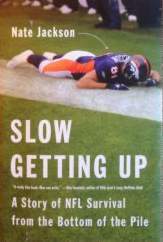Stephen W. Hiemstra's Blog, page 116
June 4, 2021
Doxologie

Von Stephen W. Hiemstra
Und führe uns nicht in Versuchung, sondern erlöse uns von dem Bösen.
[Denn dein ist das Reich und die Kraft und die Herrlichkeit in Ewigkeit. Amen.]
(Matt. 6:13 L17)
Neuere Bibelslübersetzungen schließen die Doxologie aus: “Denn dein ist das Reich und die Kraft und die Herrlichkeit in Ewigkeit. Amen” order setzen die wie oben in Klammern ab. Warum?
Jesus gab den Jüngern das Herrnsgebet, um ihnen das Beten beizubringen, nicht als obligatorisches Gebet. Dreimal wiederholt Jesus den Satz: “Wenn du aber betes” (Matt 6:5-7). Dann sagt er nur: “Darum sollt ihr so beten” (Matt 6:9). Jesus bietet ein Gebetsmuster an, das nach Bedarf angepasst werden kann. Die primitive Kirche liebte dieses Gebet und nahm diesen Rat ernst. Die häufigste Ergänzung war das Hinzufügen einer Doxologie und des Wortes Amen, was bedeutet, lass es so sein. Folglich erscheint dieser Zusatz nicht in den frühesten Manuskripten, obwohl die Kirchen ihn heute noch verwenden.
Als die Reformer im fünfzehn Jahrhundert begannen, die griechischen Originaltexte zu untersuchen, wurde die lateinische Bibelübersetzung des Heiligen Hieronymus fast ausschließlich seit tausend Jahren verwendet. Die sofort in den örtlichen Bibliotheken verfügbaren Manuskripte des griechischen Neuen Testaments wurden zusammengestellt und in Englisch, Deutsch, Französisch und andere europäische Sprachen übersetzt. Viel später jedoch, als Wissenschaftler begannen, die Tausenden von griechischen Manuskripten zu vergleichen, die in den Kirchen und Bibliotheken der Welt erhältlich sind, wurde ihnen bewusst, dass nicht alle Manuskripte gleich alt waren. Neuere Bibelübersetzungen konzentrieren sich auf die älteren Manuskripte (Metzger and Ehrman 2005).
Die älteren Manuskripte schliessen die Doxologie und Amen aus. Dies ist der Grund, warum Übersetzungen der Bibel, die vor dieser Entdeckung gemacht wurden, die Doxologie und Amen beinhalten, während neuere Übersetzungen dies nicht tun. Hugenberger (1999, 55) stellt fest, dass die Doxologie eine längere Doxologie abkürzt, die in 1 Chronik 29: 11-13 zu finden ist.
Doxologie ist vom griechischen Wort, Doxa, abgeleitet, was bedeutet: “Der Zustand hell oder strahlend zu sein, Helligkeit, Pracht, Ausstrahlung” (BDAG 2077, 1). Amen ist ein hebräisches Wort, das Jesus selbst zugeschrieben wird und das wirklich bedeutet. Wenn Jesus sagt: “Wahrlich, wahrlich, ich sage euch” (John 1:51), lautet der griechische Text—Amen, Amen—was der Grieche aus dem Hebräischen transliteriert.
Persönliches Gebet ist eine christliche Besonderheit. Jesus lehrte uns, wie man betet, nicht genau was man betet. Er möchte, dass wir als Glaubensgemeinschaft zu ihm kommen, aber er möchte auch, dass wir uns ihm als Individuum nähern. Persönliches Gebet ist eine christliche Besonderheit.
Doxologie
Siehe auch:
Einleitung auf Ein Christlicher Leitfaden zur Spiritualität
Andere Möglichkeiten, sich online zu engagieren:
Autoren Seite: http://www.StephenWHiemstra.net
Herausgeber Seite: http://www.T2Pneuma.com
Mitteilungsblatt: https://bit.ly/Ready_2021
The post Doxologie appeared first on T2Pneuma.net.
June 1, 2021
Turansky and Miller: Hope for Parents
 Scott Turansky and Joanne Miller. 2013. The Christian Parenting Handbook: 50 Heart-Based Strategies for All the Stages of Your Child’s Life. Nashville: Thomas Nelson.
Scott Turansky and Joanne Miller. 2013. The Christian Parenting Handbook: 50 Heart-Based Strategies for All the Stages of Your Child’s Life. Nashville: Thomas Nelson.
Review by Stephen W. Hiemstra
Growing up, I always knew that I wanted to get married and have a family. This meant that my career had to finance a house and allow my wife, Maryam, to stay at home with the kids. As the economic ground shifted under our feet early in my career, this objective consumed much too much of my time. Meanwhile, supports in society and in the church for parents raising kids were mostly obsolete or non-existent. In this family-hostile environment, Scott Turansky and Joanne Miller’s The Christian Parenting Handbook comes as welcome relief.
Turansky and Miller focus on identifying and enhancing character development, not behavior modification, from a biblical perspective. They advance 6 principles:
Begin with prayer, asking for wisdom, grace, patience, and perseverance;Build on a biblical foundation;Think long term focusing on patterns that reveal issues of the heart;Watch for variations on a theme;Focus strategically and leave less important issues for another time; andLook for internal stumbling blocks that hold up development.They return to these principles throughout the book but do not simply present an analytical framework. They write the book in 50 chapters focusing each on a particular issue or idea. Early on they cite the Apostle Paul:
See to it that no one takes you captive by philosophy and empty deceit, according to human tradition, according to the elemental spirits of the world, and not according to Christ. (Colossians 2:8 ESV)
By focusing on heart issues, Turansky and Miller go beyond applied psychology and the how-to suggestions that are usually given parents and think about parenting differently. Their claim to offer a Christian approach to parenting is not lite fluff. This point becomes clear when they compare their ideas to the more typical advice to parents.
For example, in chapter 1, Consistency is Overrated, they compare a heart-focus to the usual behavioral modification approach which insists on consistency. Behavioral modification requires consistency because it is based on stimulus—response theory. Each time a stimulus (reward or punishment) is applied, the same response is solicited. But the Christian parent does not want the child to do what’s right because a reward is given (or punishment avoided)—they want the child to desire to do right—a change in their hearts (2-3). Consistency is often inappropriate when focusing on the heart because each child is different.
In chapter 2, Build Internal Motivation, they compare internal and external motivation as parenting strategies. External motivation argues: if you do X, then I will let you do Y (5). The problem with external motivation is that children learn to expect a reward for good behavior. By contrast, God told Samuel in selecting a new king for Israel: For the LORD sees not as man sees: man looks on the outward appearance, but the LORD looks on the heart. (1 Samuel 16:7 ESV). In a heart-based approach, the parent shares values and reasons behind rules while remaining relational and firm (6). In discipline, the parent expresses sorrow, not anger (7). External motivations are used primarily to encourage internal motivation (8).
In chapter 3 Turansky and Miller continue this theme advising parents to focus on reinforcing good behavior rather than simply harping about bad behavior. Character qualities to look out for include: obedience, honor, perseverance, attentiveness to others, patience, self-discipline, and gratefulness (16). In observing problem behaviors, the idea is to link it to a character quality that needs more development (16-17). In discipling towards character changes they advise parents to tie the return of a privilege to positive actions, not the absence of bad behaviors (12).
Clearly, this book offers a lot of good advice [1].
Turansky and Miller’s The Christian Parenting Handbook is not your typical parenting advice book. In focusing on heart changes, they avoid the usual child expert and child psychology advice. Their application of biblical teaching is at the core of their thinking, not just a decoration of their own ideas with Bible passages. Consequently, their approach to applying biblical teaching extends beyond the realm of parenting.
As I was reading through Turansky and Miller, I kept thinking: oh my goodness, my kids are 20 something and this book was not available to me when I needed it. Turansky and Miller anticipated this reaction. They offer encouragement—never give up on your kids. God can change a person at any age by working on the heart (204). It is never too late—God can change parents too.
Footnotes[1] Turansky and Miller are founders of the National Center of Biblical Parenting and Biblical Parenting University (www.BiblicalParentingUniversity.com).
Turansky and Miller: Hope for ParentsAlso see:Hamaker on Sibling Rivalry Wicks Seeks Availability Deepens FaithBooks, Films, and MinistryOther ways to engage online:Author site: http://www.StephenWHiemstra.netPublisher site: http://www.T2Pneuma.com Newsletter: https://bit.ly/Ready_2021
The post Turansky and Miller: Hope for Parents appeared first on T2Pneuma.net.
May 31, 2021
Temptation and Evil: Monday Monologues (podcast) May 31, 2021

By Stephen W. Hiemstra
This morning I will share a prayer and reflect on Temptation and Evil. After listening, please click here to take a brief listener survey (10 questions).
To listen, click on this link.
Hear the words; Walk the steps; Experience the joy!
Temptation and Evil: Monday Monologues (podcast) May 31, 2021
Also see:
Monday Monologue On March 26, 2018
Other ways to engage online:
Author site: http://www.StephenWHiemstra.net,
Publisher site: http://www.T2Pneuma.com.
Newsletter: https://bit.ly/Ready_2021
The post Temptation and Evil: Monday Monologues (podcast) May 31, 2021 appeared first on T2Pneuma.net.
May 30, 2021
Prayer Day 28
 Available on Amazon.com
Available on Amazon.comAlmighty Father,
We praise you for creating heaven and earth; creating all that is, was, or will ever be; and creating all things seen and unseen.
We look out on your creation and praise your name.
Keep us safe in your hands: seal our hearts; strengthen our minds; and shelter our bodies from all evil.
In our hour of weakness, may we ever turn only to you.
In the name of the Father, the Son, and the Holy Spirit, Amen.
Prayer Day 28
Also see:
Believer’s Prayer
Other ways to engage online:
Author site: http://www.StephenWHiemstra.net
Purchase Book: http://www.T2Pneuma.com
Newsletter: https://bit.ly/Ready_2021
The post Prayer Day 28 appeared first on T2Pneuma.net.
Oración Dia 28
Por Stephen W. Hiemstra
Padre Todopoderoso.
Te alabamos por crear el cielo y la tierra; por crear todo lo que es, lo que fue, o lo que nunca será; y por crear todas las cosas visibles e invisibles.
Observamos tu creación y alabamos tu nombre.
Mantenos a salvo en tus manos: sella nuestros corazones; fortalece nuestras mentes; y refugia nuestros cuerpos de toda malvadad.
En nuestra hora de debilidad, haznos retornar siempre y sólo a tí.
En el nombre del Padre, del Hijo, y del Espíritu Santo, Amén.
Oración Dia 28
Ver también:
Prefacio de La Guía Cristiana a la Espiritualidad
Otras formas de participar en línea:
Sitio del autor: http://www.StephenWHiemstra.net
Comprar Libro: http://www.T2Pneuma.com
Boletín informativo: https://bit.ly/Ready_2021
The post Oración Dia 28 appeared first on T2Pneuma.net.
Gebetstag 28
Vor Stephen W. Hiemstra
Allmächtiger Vater,
Wir preisen Sie dafür, dass Sie Himmel und Erde geschaffen haben; Alles erschaffen, was ist, war oder jemals sein wird; und alle Dinge erschaffen, die gesehen und unsichtbar sind.
Wir sehen an deine Schöpfung und loben deine Name.
Schütze du uns in deinen Händen: versiegele unsere Herzen; stärke unseren Geist; und schütze unseren Körper vor allem Bösen.
Mögen wir uns in unserer Stunde der Schwäche jemals nur an dir wenden.
Im Namen des Vaters, des Sohnes, und des Heiligen Geistes, Amen.
Gebetstag 28
Siehe auch:
Einleitung auf Ein Christlicher Leitfaden zur Spiritualität
Andere Möglichkeiten, sich online zu engagieren:
Autoren Seite: http://www.StephenWHiemstra.net
Herausgeber Seite: http://www.T2Pneuma.com
Mitteilungsblatt: https://bit.ly/Ready_2021
The post Gebetstag 28 appeared first on T2Pneuma.net.
May 28, 2021
Temptation and Evil

“And lead us not into temptation, but deliver us from evil.” (Matt 6:13)
By Stephen W. Hiemstra
Do you ever worry about Satan?
Satan’s role in tempting us and promoting evil in the world is found throughout scripture.
In the Garden of Eden, Satan is pictured as a snake who rebels against God and tempts others to sin by rebelling with him [1]. God later advises Cain to be good because, otherwise, sin will strike like a snake crouching at your door (Gen 4:7).
Another important image of Satan is given in Job 1 where Satan is depicted as a ruthless prosecuting attorney in God’s court. Satan’s cruel lies slander a righteous Job. Still, Satan cannot afflict Job without first seeking God’s permission (Job 1:6-12). In spite of Satan’s cruelty, Job remains faithful. In the end, God not only acquits him of all of Satan’s charges, Job is compensated for his losses (Job 42:10).
In the synoptic gospels, the Holy Spirit leads Jesus into the desert where the devil tempts him [2]. Much like Adam and Eve are tempted with food, the devil starts by goading a hungry Jesus into turning a stone into bread. The devil tempts Jesus three times. Jesus cites scripture in response to each temptation. In the final temptation, the Devil’s temptation starts by misquoting scripture, but Jesus corrects the deception and resists the temptation [3].
Like Job and unlike Adam, Jesus remains faithful to God’s will in life and in death. Jesus’ death on the cross then fulfills the prophecy of Satan’s defeat (Gen 3:15) and pays the penalty for sin—we are redeemed. Because the curse of sin is broken, the death penalty for sin has been rescinded (1 Cor 15:22). The resurrection accordingly proves that we have been reconciled with God.
In the Lord’s Prayer, Jesus asks us to pray that we not be tempted and that we be delivered from evil. Because Satan must ask permission to tempt us, God can deny that petition and our deliverance is within his power. King David writes: “Preserve me, O God, for in you I take refuge.” (Ps 16:1) Jesus has promised us that when we turn to him in weakness our salvation is secure (John 10:29).
[1] For example, Kline (2006, 302) writes about the people of God and the people of the serpent.
[2] Mark 1:12-13 gives a brief over view while Matt 4:1-11 and Luke 4:1-13. The Luke version has the most detail. The second and third questions posed by Satan appear in different order in Matthew and Luke.
[3] Each temptation Jesus faces is a challenge facing all Christians, particularly leaders. Henri Nouwen (2002, 7–8) summarizes these leadership challenges as the temptation to be relevant (provide food), to be spectacular (show your divinity), and to be powerful (take charge).
References
Kline, Meredith G. 2006. Kingdom Prologue: Genesis Foundations for a Convenental Worldview. Eugene, OR: Wipf & Stock Publishers.
Nouwen, Henri J. M. 2002. In the Name of Jesus: Reflections on Christian Leadership. New York: Crossroad Publishing Company.
Temptation and Evil
Also see:
Preface to A Christian Guide to Spirituality
Other ways to engage online:
Author site: http://www.StephenWHiemstra.net
Purchase Book: http://www.T2Pneuma.com
Newsletter: https://bit.ly/Ready_2021
The post Temptation and Evil appeared first on T2Pneuma.net.
Tentación y Mal
“Y no nos metas (no nos dejes caer) en tentación, sino líbranos del mal (del maligno).” (Matt 6:13 NBH)
Por Stephen W. Hiemstra
¿Alguna vez te preocupas por Satanás?
El papel de Satanás en tentarnos y promover el mal en el mundo se encuentra en toda las Escrituras.
En el Jardín de Edén, Satanás es representado como una serpiente que se revele contra Dios y tienta a otros a pecar por rebelarse con él [1]. Dios más tarde aconseja Caín a ser bueno por que de lo contrario los pecados golpeará como un serpiente se agacha en su puerta (Gen 4:7).
Otra importante imagen de Satanás se da en Job 1 donde Satanás es representado como un fiscal despiadado ante el tribunal de Dios. Las crueles mentiras de Satanás calumnian un justo Job. Sin embargo, Satanás no puede afligir a Job sin antes pedir permiso de Dios (Job 1:6-12). A pesar de la crueldad de Satanás, Job permanece fiel. Al final, Dios lo absolví de todos los cargos de Satanás y también se compensa Job para sus pérdidas (Job 42:10).
En los evangélios sinópticos, el Espíritu Santo llevó Jesús en el desierto donde el diablo le tiente [2]. Al igual como Adán y Eva se tientan con alimentos,el diablo comenzó a incitar a un Jesús hambre en convertir un piedras en pan. El diablo tiente Jesús tres veces. Jesús citó la escritura en respuesta a cada tentación. En la ultima tentación, la tentación del diablo citó erróneamente las escrituras, pero Jesús corrige el engaño y se resiste a la tentación [3].
Como Job y no como Adán, Jesús permanece fiel a la voluntad de Dios en la vida y en la muerte. La muerte de Jesús por la cruz entonces llena la profecía de la derrota de Satanás (Gen:15) y lo pagó la pena para los pecados—somos redimido. Por que la maldición de pecado se había sido derogado (1 Cor 15:22). En consecuencia la resurrección prueba que hemos sido reconciliados con Dios.
En el Padre Nuestro, Jesús pida nos a orar que no caer en la tentación y que se entregará del mal. Por que Satanás debe pedir permiso a tentar nos, Dios puede negar permisión y nuestra liberación permanece en su poder. El rey David escribe: “Protégeme, oh Dios, pues en Ti me refugio.” (Psa 16:1 NBH) Jesús nos prometía que cuando volveremos en debilidad a él nuestra salvación se segura (John 10:29).
Notas
[1] Por ejemplo, Kline (2006, 302) escribe sobre el pueblo de Dios y el pueblo de la serpiente.
[2] Mark 1:12-13 da un sinopsis breve mientras Matt 4:1-11 y Luke 4:1-13 son más largo. La versión de Lucas da el mayor detalle. Las segunda y tercera preguntas presentaban por Satanás parece en un order diferente en Mateo y Lucas.
[3] Cada tentación que Jesús afrentó es un desafío que enfrenta todos los cristianos, en particular los líderes. Henri Nouwen (2002, 7-8) resume estos desafíos de líderes como un tentación a ser relevante (proporcionar alimentos), a ser espectacular (mostrar su divinidad), y a ser poderoso (hacerse cargo).
Referencias
Kline, Meredith G. 2006. Kingdom Prologue: Genesis Foundations for a Convenental Worldview. Eugene, OR: Wipf & Stock Publishers.
Nouwen, Henri J. M. 2002. In the Name of Jesus: Reflections on Christian Leadership. New York: Crossroad Publishing Company.
Ver también:
Prefacio de La Guía Cristiana a la Espiritualidad
Otras formas de participar en línea:
Sitio del autor: http://www.StephenWHiemstra.net
Comprar Libro: http://www.T2Pneuma.com
Boletín informativo: https://bit.ly/Ready_2021
The post Tentación y Mal appeared first on T2Pneuma.net.
Versuchung und Böses
Von Stephen W. Hiemstra
Und führe uns nicht in Versuchung, sondern erlöse uns von dem Bösen. (Matt 6:13)
Machst du dir jemals Sorgen um Satan?
Satans Rolle, uns zu versuchen und das Böse in der Welt zu fördern, findet sich in der gesamten Schrift.
Im Garten Eden wird Satan als eine Schlange dargestellt, die sich gegen Gott auflehnt und andere zur Sünde verführt, indem sie mit ihm rebelliert (Kline 2006, 302). Gott rät Kain später, gut zu sein, denn sonst schlägt die Sünde wie eine Schlange vor deiner Tür (Gen 4:7).
Ein weiteres wichtiges Bild von Satan ist in Job 1 zu sehen, wo Satan als rücksichtsloser Staatsanwalt vor Gottes Gerichthof dargestellt wird. Satans grausame Lügen verleumden einen gerechten Job. Dennoch kann Satan Job nicht bedrängen, ohne vorher Gottes Erlaubnis einzuholen (Job 1:6-12). Trotz Satans Grausamkeit bleibt Job treu. Am Ende spricht Gott ihn nicht nur von allen Anklagen Satans frei, Job wird für seine Verluste entschädigt (Job 42:10).
In den synoptischen Evangelien führt der Heilige Geist Jesus in die Wüste, wo der Teufel ihn versucht (e.g. Luke 4:1-13). Ähnlich wie Adam und Eva mit Essen versucht sind, beginnt der Teufel damit, einen hungrigen Jesus dazu zu stacheln, einen Stein in Brot zu verwandeln. Der Teufel versucht Jesus dreimal. Jesus zitiert den Schrift nach jeder Versuchung. In der letzten Versuchung beginnt die Versuchung des Teufels damit, die Schrift falsch zu zitieren, aber Jesus korrigiert die Täuschung und resistiert der Versuchung. Nouwen (2002, 7–8) fasst diese Führungsherausforderungen als Versuchung zusammen, relevant zu sein (Nahrung bereitzustellen), spektakulär zu sein (deine Göttlichkeit zu zeigen) und mächtig zu sein (Verantwortung zu übernehmen).
Wie Hiob und nicht wie Adam bleibt Jesus dem Willen Gottes im Leben und im Tod treu. Der Tod Jesu am Kreuz erfüllt dann die Prophezeiung der Niederlage Satans (Gen 3:15) und zahlt die Strafe für die Sünde—wir werden erlöst. Weil der Fluch der Sünde gebrochen ist, wurde die Todesstrafe für die Sünde aufgehoben (1 Cor 15:22). Die Auferstehung beweist dementsprechend, dass wir mit Gott versöhnt wurden.
Im Herrensgebet, Jesus bittet uns zu beten dass wir nicht versucht sein werden und dass wir vom Bösen befreit werden. Weil Satan um Erlaubnis bitten muss, uns zu versuchen, kann Gott diese Bitte leugnen und unsere Befreiung liegt in seiner Macht. König David schreibt: “Bewahre mich, Gott; denn ich traue auf dich.” (Ps 16:1) Jesus hat uns versprochen, dass unser Heil sicher ist, wenn wir uns in Schwäche an ihn wenden (John 10:29).
Siehe auch:
Einleitung auf Ein Christlicher Leitfaden zur Spiritualität
Andere Möglichkeiten, sich online zu engagieren:
Autoren Seite: http://www.StephenWHiemstra.net
Herausgeber Seite: http://www.T2Pneuma.com
Mitteilungsblatt: https://bit.ly/Ready_2021
The post Versuchung und Böses appeared first on T2Pneuma.net.
May 25, 2021
Jackson and Football Dreams

Nate Jackson. 2013. Slow Getting Up: A Story of NFL Survival from the Bottom of the Pile. New York: HarperCollins Publishers.
Review by Stephen W. Hiemstra
The best manager that I ever worked with, who later became a good friend, knew how to motivate his staff—he focused on their aspirations. He worked the dream. The job was not about the money; it was not about agency goals; it was not about the team; it was not even about the work per se; it was about the dream. In spite of an oppressive work environment where we were ignored and our work forgotten, he kept the dream alive and we loved him. In his book, Slow Getting Up, Nate Jackson talks about living the football dream.
IntroductionWhat is the football dream? Jackson writes:
A footback dream is easy to spot. Turn on SportsCenter and they’ll show what it looks like. Tom Brady’s life. Peyton Manning’s life. Fairy tales. Storybooks. The football dream I had as a child unfolded much differently. But it has still unfolded. Every crease and every line, every grunt and every pop. I’m playing the game I love. The grass is still green, the hits still hurt, and the ball in flight is still the most beautiful sight I know. I will chase it to the ends of the earth (69).
The dream justifies every sacrifice, every injury, every set back. Along with the dream comes a cool uniform, TV time, money, respect, easy sex, and all the things that go with it. The dream and its evil twin—the nightmare—battle for our attention throughout Jackson’s book.
Mom FactorSprinkled throughout the book are references to mom—the silent, ever-present observer. For example, on signing his first National Football League (NFL) contract, Jackson blurts out: Look, Ma, I’m a 49er! (15). This comment seems like a throw-away cliché the first couple times it appears, but then Jackson writes:
My mom has three criteria that she uses to judge a game. One, did I stay healthy? Two, was I happy with my performance? Three, did we win? Moms are ahead of the curve. The NFL is momless (178-179).
NFL players chase the dream; NFL moms live the nightmare.
Tension between the Dream and the NightmareThis tension between dream and nightmare fuels Jackson’s plot. The sagas of the games compete with injury reports to build excitement—will the NFL sign Jackson another season or will his injuries permanently disqualify him ? Injury report after injury report chronicles his career from 2002 with the 49ers to 2003-2008 with the Denver Broncos. While the career continues, the bloom is off the rose after Darrent Will is shot to death after a Broncos game in 2006 (130). Jackson writes: After D-Will died I sank into a hole (133). The nightmare finally gets the upper-hand over the dream—the dream was no longer enough (134).
OrganizationIn Slow Getting Up Jackson writes an autobiographical account of his 6 years in the NFL in 12 chapters. These chapters are preceded by a prologue describing his last days as a professional football player and followed by a short acknowledgments section which describes his writing career. Although Jackson has written for a number of periodicals, including the Wall Street Journal [1], this is his first book.
Jackson is an accomplished writer whose autobiography reads like an action thriller. This is because he pays attention to pacing and salts his personal story with skillfully articulated character sketches of the people that populate his life. He is coy about telling the reader that he is a Christian [2], but it comes out in his account of prayers in the showers—written in the third person—where the entire Lord’s Prayer is recited (171-172).
AllegoryInterestingly, Slow Getting Up can be read as an allegory symbolizing the dark underside of the postmodern era. An era where work is just a text away, image matters more than reality, and masculinity is defined by doing stupid things just because you can. To see this, reflect on the Apostle Paul’s description of the old self and the new self in Christ:
…put off your old self, which belongs to your former manner of life and is corrupt through deceitful desires, and to be renewed in the spirit of your minds, and to put on the new self, created after the likeness of God in true righteousness and holiness (Ephesians 4:22-24 ESV).
In this reading, football dreams are actually a nightmare masquerading as something positive. You think that you control your life—your fate—but it is an obsession wrapped in a brazen lie. The old self thrives, dominates, and poisons our life because we love the illusion of self-determination. This is Paul’s old self.
But as the truth keeps interjecting itself into our lives, the nightmare slowly emerges in full horror. We discover that, not only are we not in control, we cannot even break out of the chains that we have forged for ourselves in our obsession. For Jackson, the nightmare manifests itself when he finds himself playing football for the Las Vegas Locos stripped of his youth & health and offered little compensation or future prospects (235). Only God through Jesus Christ can remove those chains and set us free. This is Paul’s new self in Christ.
By highlighting the old self, Jackson invites us to consider something new, something better. Thank you Nate.
Footnotes[1] www.WSJ.com.
[2] Christian quarterback, Tim Tebow, played for the Denver Broncos after Jackson retired during 2010-2012 (http://en.wikipedia.org/wiki/Tim_Tebow).
Jackson and Football DreamsAlso see:Tebow Encourages Those Shaken Wicks Seeks Availability Deepens FaithBooks, Films, and MinistryOther ways to engage online:Author site: http://www.StephenWHiemstra.netPublisher site: http://www.T2Pneuma.com Newsletter: https://bit.ly/Ready_2021
The post Jackson and Football Dreams appeared first on T2Pneuma.net.




